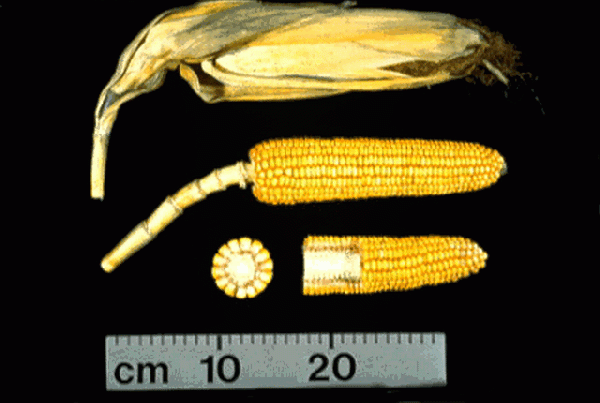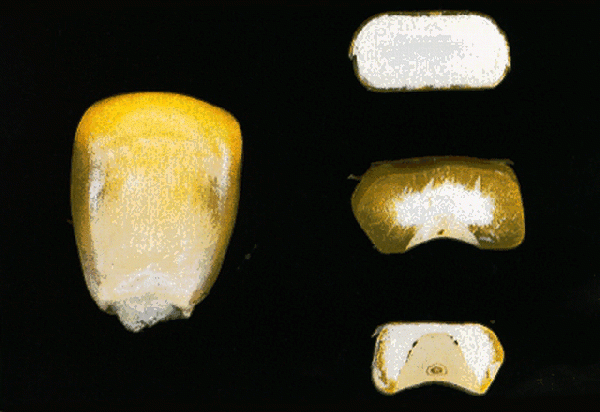Maize Growth and Development
The growth stages of maize are described and depicted on the Iowa State University Integrated Crop Management site. The vegetative and reproductive stages of maize are indicated in the table below.
Vegetative and reproductive stages of a maize plant
| Vegetative Stages | |
|---|---|
| VE | Emergence |
| V1 | First leaf |
| V2 | Second leaf |
| V(n) | nth leaf |
| VT | Tasseling |
| Reproductive Stages | |
| R1 | Silking |
| R2 | Blister |
| R3 | Milk |
| R4 | Dough |
| R5 | Dent |
| R6 | Physiological maturity |
Germination and Emergence (VE)
The radicle is first to begin elongation from the swollen kernel, followed by the coleoptile with the enclosed plumule (embryonic plant), and then the three to four lateral seminal roots (seminal root system). VE (emergence) is attained by rapid mesocotyl elongation which pushes the growing coleoptile to the soil surface. Under warm, moist conditions, plant emergence will occur within 4 to 5 days after planting, but under cool or dry conditions, 2 weeks or longer may be required.
Upon emergence and exposure of the coleoptile tip to sunlight, coleoptile and mesocotyl elongation stops. The rapidly developing embryonic leaves then grow through the coleoptile tip and development of the above-ground plant follows. Growth of radicle and lateral seminal roots slows soon after VE and is virtually non-existent by the V3 stage.
The nodal root system is initiated at about VE, and the first set (whorl) of nodal roots begins elongation from the first node during V1. From V1 to about R3 (after which there is very limited root growth), a set of nodal roots begins development at each progressively higher node on the stalk, up to 7 to 10 nodes total. The nodal root system becomes the major supplier of water and nutrients to the plant by the V6 stage.
V3 Stage
Root hairs are growing from the nodal roots by this time, and growth of the seminal root system has virtually ceased. All leaves and ear shoots that the plant will eventually produce are being initiated (formed) now. At about V5, leaf and ear shoot initiation will be complete and a microscopically small tassel is initiated in the stem apex tip. The stem apex at tassel initiation is just under or at the soil surface, although total above-ground plant height is about 20 cm.
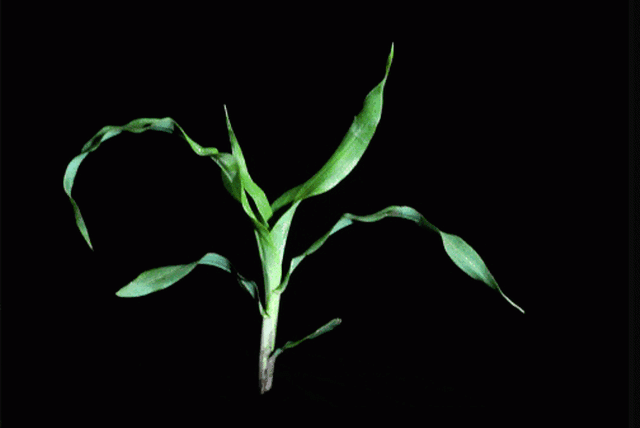
V6 Stage
At V6, the growing point and tassel are above the soil surface and the stalk is beginning a period of greatly increased elongation. Below ground, the nodal root system is now the major functioning root system. Some ear shoots or tillers, which initially look very similar, are visible at this time. Tillers (also termed suckers) will generally form at nodes originating below the soil surface. Loss of the two lowest leaves may have already occurred by the V8 stage.
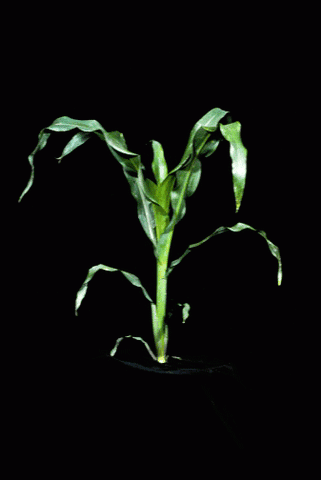
V9 Stage
Ear shoots (potential ears) are visible upon dissection of a V9 plant. An ear shoot will develop from every above-ground node, except the last six to eight nodes below the tassel. Only one or two ear shoots develop into a harvestable ear. The tassel develops rapidly and the stalk rapidly elongates. Stalk elongation occurs through elongation of its internodes. By V10, the time between the appearance of new leaf stages will shorten, generally occurring every two to three days.
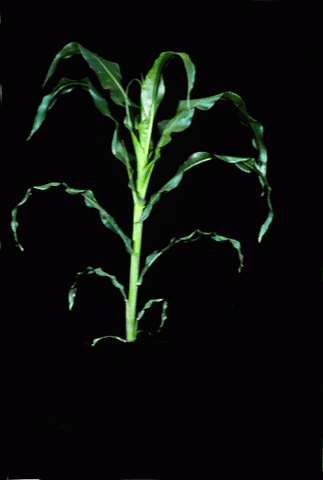
V12 Stage
Although the ear shoots (potential ears) were formed just before tassel formation (V5), the number of ovules (potential kernels) on each ear and the size of the ear are determined at the V12 stage. The number of rows of kernels per ear has already been established, but the determination of the number of kernels per row will not be complete until about one week from silking or about V17.
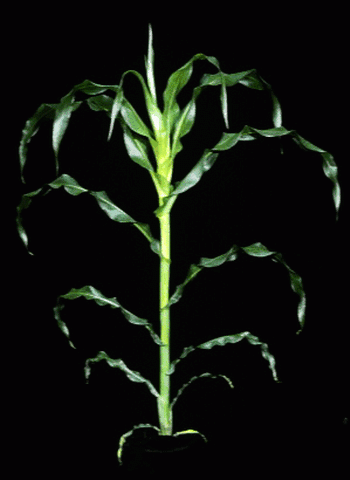
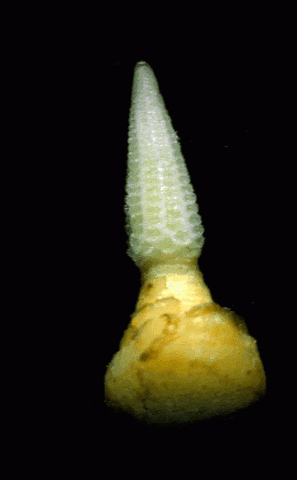
V15 Stage
The V15 maize plant is approximately 10-12 days from the R1 (silking) stage. This stage is the beginning of the most crucial period of plant development in terms of grain yield determination. Upper ear shoot development by V15 has surpassed that of the lower ear shoots, and a new leaf stage is now occurring every 1-2 days. Silks are just beginning to grow from the upper ears at this time. By V17 the upper ear shoots may have grown enough that their tips are visible at the top of the leaf sheaths that surround them. The tip of the tassel may also be visible at V17.
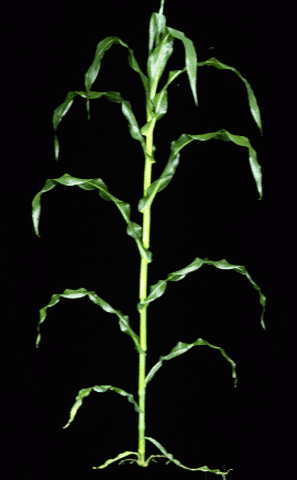
V18 Stage
In a V18 maize plant, silks from the basal ear ovules are first and silks from the ear tip ovules are last to elongate. Brace roots (also termed aerial nodal roots) are now growing from the nodes above the soil surface. They help support the plant and obtain water and nutrients during the reproductive stages.
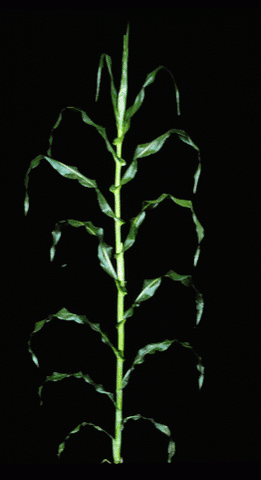

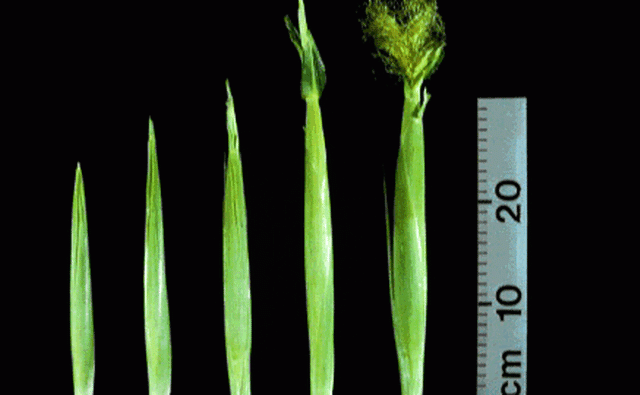
VT Stage
The VT stage is initiated when the last branch of the tassel is completely visible and the silks have not yet emerged. VT begins approximately 2-3 days before silk emergence, during which time the corn plant will almost attain its full height and pollen shed begins. The time between VT and R1 can fluctuate considerably depending on the hybrid and environmental conditions. Under field conditions, pollen shed (also termed pollen drop) usually occurs in the late mornings and early evenings.
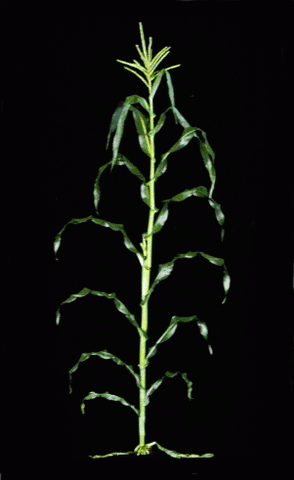
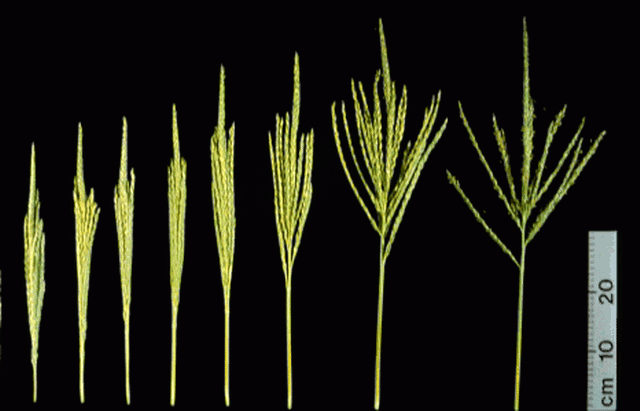
R1 Stage - Silking
R1 begins when any silks are visible outside the husks (figure). Pollination occurs when these new moist silks catch the falling pollen grains. A captured pollen grain takes about 24 hours to grow down the silk to the ovule where fertilization occurs and the ovule becomes a kernel. Generally 2-3 days are required for all silks on a single ear to be exposed and pollinated. Silks grow 2.5-3.8 cm (1-1.5 inches) each day and continue to elongate until fertilized. The R1 ovule or kernel is almost completely engulfed in the surrounding cob materials (technically termed the glumes, lemmas and paleas) and is white in color on the outside. The inner material of the R1 kernel is clear and has very little fluid present. The embryo or germ is not yet visible when dissected. The shank and husks attain full size between the R1 and R2 stages. The figure reveals the presence of silk hairs, which help catch the pollen.
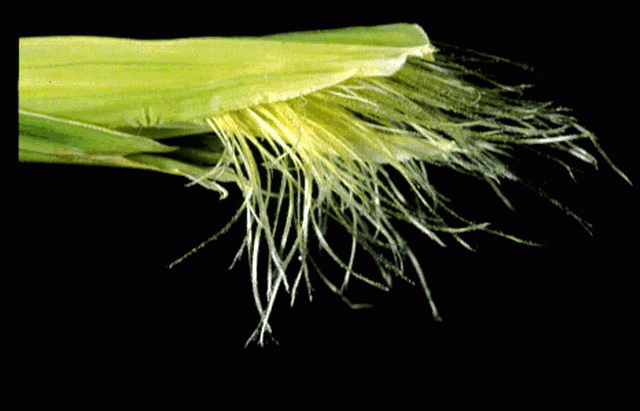
R2 Stage - Blister (10-14 days after silking)
R2 kernels are white on the outside (figure) and resemble a blister in shape. The endosperm and its now abundant inner fluid is clear in color and the tiny embryo can now be seen upon careful dissection. Within the developing embryo is a developing miniature corn plant. The silks having completed their flowering function are now darkening in color and beginning to dry.

R3 Stage - Milk (18-22 days after silking)
The R3 kernel displays yellow color on the outside, and the inner fluid is now milky white due to accumulating starch. The embryo is growing rapidly now and is easily seen upon dissection. Most of the R3 kernel has grown out from the surrounding cob materials and the silks at this time are brown and dry or becoming dry.
R4 Stage - Dough (24-28 days after silking)
Continued starch accumulation in the endosperm has now caused the milky inner fluid to thicken to a pasty consistency. The R4 embryo has greatly increased in size from the R3 stage. The shelled cob is a light red to pink color due to beginning color changes of the surrounding materials (lemmas and paleas). The reduced fluid and increased solids within the kernel at this time produce a doughy consistency. Just prior to R5 kernels along the length of the ear begin to dent or dry on top.
R5 Stage - Dent (35-42 days after silking)
At R5 (figure) all or nearly all kernels are dented or denting and the shelled cob is dark red in color. The kernels are drying down now beginning at the top where a small hard white layer of starch is forming. This starch layer appears shortly after denting.
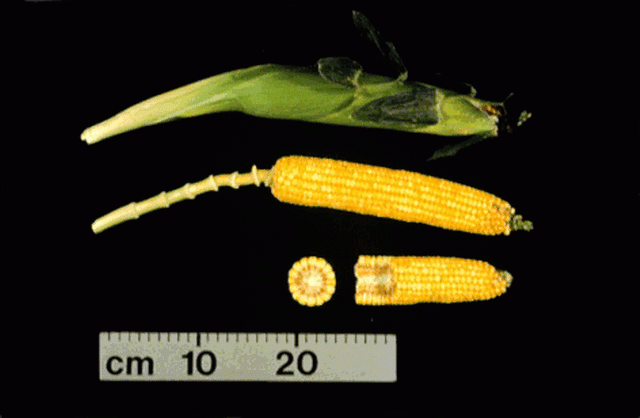
R6 Stage - Physiological Maturity (55-65 days after silking)
All kernels on the ear have attained their maximum dry weight or maximum dry matter accumulation. The hard starch layer has advanced completely to the cob and a black or brown abscission layer has formed. The husks and many leaves are no longer green although the stalk may be. The figure below shows an R6 kernel on the side opposite the embryo and slices laterally cut from the top, middle and bottom of the kernel.
